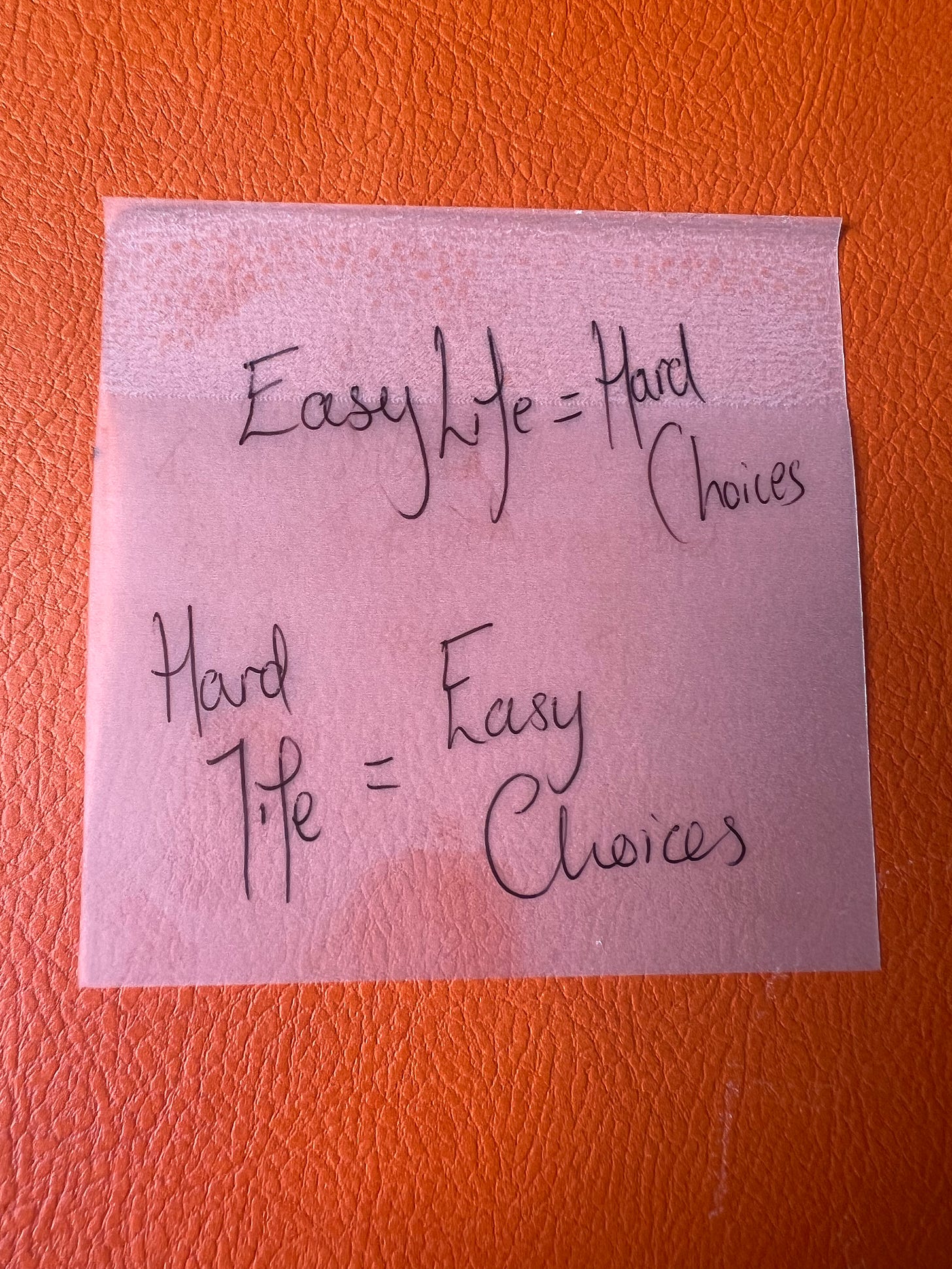Why You Should Adopt First Principles Thinking in Procurement
A Way to Slay the Procurement Dinosaur and Outdated Thinking
When it comes to solving complicated problems, relying on assumptions and conventions can be tempting. That’s how most people learn, right? Especially in Procurement, where we seem to build up knowledge by precedence and what came before. For me, this is totally unacceptable, and it has led to a profession that relies on the old without enough people considering what must change for a better future.
See, thinking through assumption and via conventions can limit creativity and lead to linear and uninspired solutions. Yes, you’re probably thinking about your linear procurement processes and why you, and everyone that uses them, hates them.
That's where first principles thinking comes in.
What is First Principles Thinking
First principles thinking, also known as "reasoning from first principles," involves breaking down complicated problems into basic elements and reassembling them from the ground up.
This approach removes the impurity of assumptions and conventions and allows you to think for yourself, unlock your creative potential, and move from linear to non-linear results.
Not everything is a natural law. Yuval Noah Harari talks about how humans believe in stories. If an idea is not a rule of nature, then it is a shared belief, and we can break these, destroy these, throw these into the fires in which they were made, take them about, reassemble them in new ways, or create something new in their place.
Aristotle, perhaps one of the earliest remembered First Principles Thinkers, noted:
“In every systematic inquiry (methodos) where there are first principles, or causes, or elements, knowledge and science result from acquiring knowledge of these; for we think we know something just in case we acquire knowledge of the primary causes, the primary first principles, all the way to the elements”.
Elon Musk is the current don of First Principles Thinking:
“I tend to approach things from a physics framework,” Musk said in an interview. “Physics teaches you to reason from first principles rather than by analogy. So I said, okay, let’s look at the first principles. What is a rocket made of? Aerospace-grade aluminum alloys, plus some titanium, copper, and carbon fiber. Then I asked, what is the value of those materials on the commodity market? It turned out that the materials cost of a rocket was around two percent of the typical price.”
That’s how Space X was born. Rockets were expensive to buy upfront, and Elon considered how to build a rocket from scratch based on breaking down the design of a current rocket and then figuring out how to build an Elonesque rocket product.
Everything in the known universe comprises trillions of tiny pieces of information and matter. Atoms. Let’s keep it simple without referring to sub-atomic particles.
Everything you see, feel, and hear is made up of something else. There is complexity in the world, and most of us would rather ignore the complexity for an easy life.
Easy Life = Hard Choices
Hard Life = Easy Choices
I’m a fan of this rule, and I’ve seen this in play within the World of Procurement everywhere I’ve operated and led.
I’ve alluded to it already in that our procurement processes mainly suck!
They follow the same ideological path that was around in the 70s despite a clear dissatisfaction with them across most organisations.
Benefits of First Principles Thinking in Procurement
In procurement, first principles thinking can be especially valuable to unlock painful areas such as process improvement, poor stakeholder engagement, and even price analysis.
By breaking down complicated procurement problems into their fundamental components, you can better understand your organisation's underlying needs and requirements.
This can help you develop more effective procurement strategies and find innovative solutions to complex problems.
One of the most sought-after benefits of first principles thinking is that it requires you to challenge assumptions and consider alternative perspectives. This is similar to the Steelman Technique, another Mental Model I strongly believe every procurement professional should undertake to learn and develop.
By questioning what you know and looking for evidence to support your ideas, you can gain a deeper understanding of the procurement process and identify areas for improvement.
“The best solution is not where everyone is already looking” - James Clear
Another advantage of first principles thinking is that it encourages continuous improvement. By putting the function front and centre and abandoning your allegiance to previous forms, you can identify new opportunities for innovation and drive meaningful change in your organisation.
Most people come at continuous improvement of procurement incorrectly. They try to improve within the set confines of the way they operate. They haven’t broken down the problem or the existing way of doing things into smaller pieces.
I’m not saying you need to break everything down into an atomic scale. But you should dig a few layers deep. I see this like a game of Minecraft (man - I’m so happy I get to use a gaming example in my Procurement writing). With Minecraft, you spawn into a world rich with life, trees, and water. But once you’ve got your spade and pickaxe, you can start digging further down into the world, where you’ll uncover amazing new areas filled with diamonds and exciting biomes to explore. With these new materials, you can start building better and rarer objects as you create a better world. That’s what we need to do more of in procurement, break things into small pieces and put them together in new ways to push the profession forward.
How to Adopt First Principles Thinking
I’ve always been a fan of the 5 Whys Question methodology. This is what kids do, and I love it when my kids start asking Why. It’s the first time they’re truly trying to make sense of the world, and it’s a skill that seemingly vanishes as we grow older.
I guess there are only so many times we can mentally withstand being told to be quiet as kids, or as adults, being told to “take it offline” - my worst fucking corporate saying. ICK FACTOR and risk of projectile vomiting whenever I hear this.
So you could keep asking why until you or your colleagues get to a point where you’ve exhausted the questions you've asked.
Otherwise, you could ask questions such as this:
Where did this idea come from?
Why do I think this?
What biases or prior insights enabled this idea?
What do I think?
How do I know this is true?
Where are credible sources that highlight this?
Have I reviewed these sources or relied on another?
What if I think the opposite of this truth?
How can I support my point of view?
Where are the credible sources to support my view?
What will my colleagues think about this?
What will they ask about this?
How do I know my point of view is correct?
And once you’ve gone through this exercise, it’s time to look over everything again and consider the following:
Why did I think that?
Was I correct?
What conclusions can I conclude from this exercise?
You’ll now be left in a far better position than you were at the start of this.
Adopting first principles thinking in procurement can unlock your creative potential, drive innovation, and develop more effective procurement strategies.
So why not give it a try?
Some Sources for the information used in this article:
First Principles: The Building Blocks of True Knowledge
First Principles: Elon Musk on the Power of Thinking for Yourself
The Many Conversations I’ve had with people where I’ve questioned everything they’ve said in order to understand their approach to determine if there are any improvements I can bring to the table are usually met with questions such as “Did your mum have you tested as a child”. The answer was no, but she reminded me this weekend that she definitely should have done this.






Great post. The only way we'll progress is to constantly challenge historic practices. The 5 why technique is so simple, yet so powerful to get to the heart of the issue. This was drilled into me at Toyota and I still use the technique today.